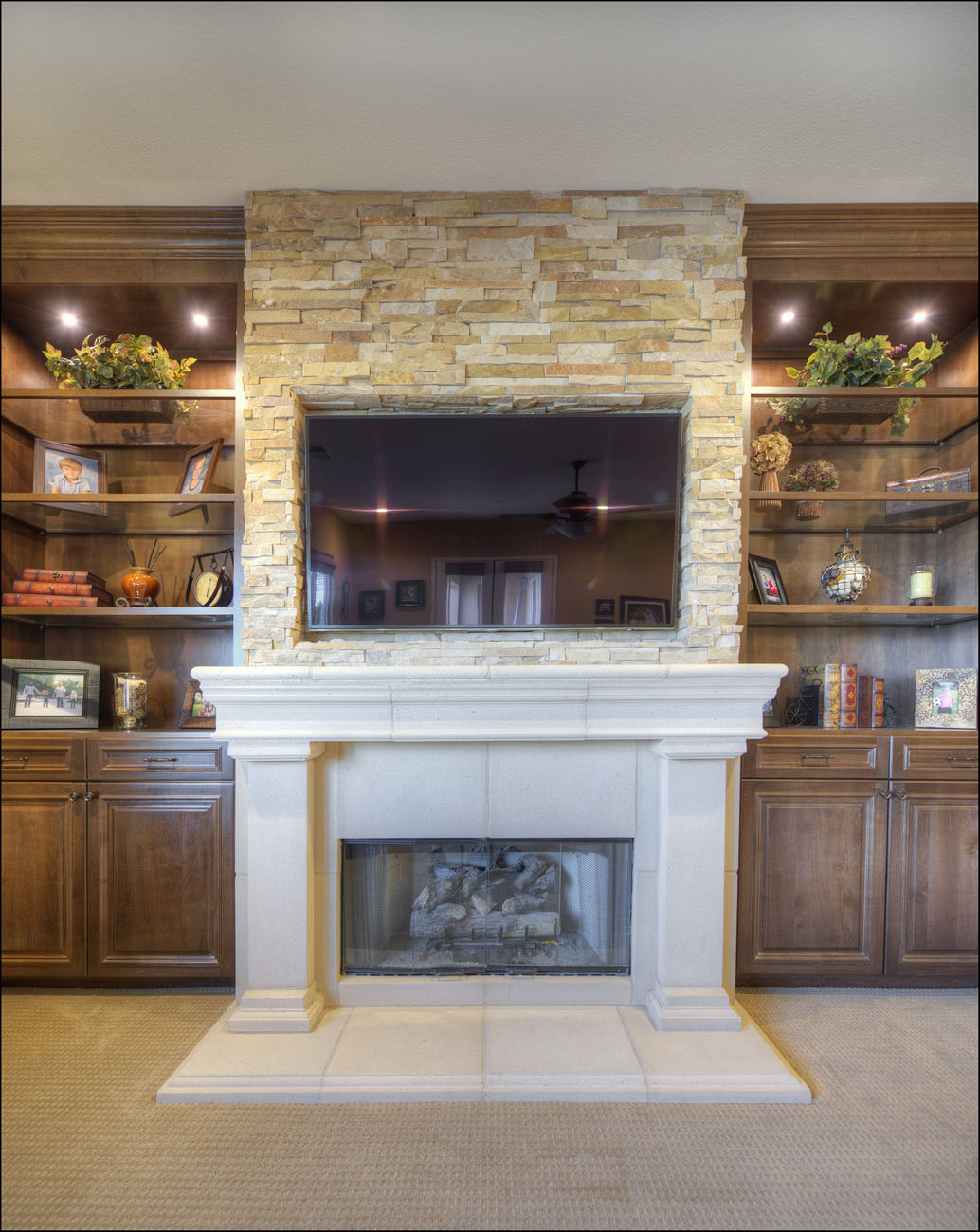Exposed brick walls on the interior of a home are the latest rave in interior design. Exposed brick allows individuals to feel connected with the building. It makes the decor seem authentic, like it's both a real part of the architecture and pretty, not just one or the other. But with maintenance and installation so costly, when it all comes down to it, does exposed brick add value to your home?
Adding Exposed Brick
While exposed brick does add some value to a home, the cost of installing it into an already finished residence would likely be more than the expected return on investment. Of course the market is not fixed, and if someone falls in love with the home because of the brick and chooses to buy it for a higher price, then adding the brick was worthwhile. This is not a guarantee, however, and appraisers are not likely to add thousands to a home's value based on exposed brick walls alone.
But even if the brick will not significantly raise the value of your home, the beautiful design accent that this material creates can still make your remodel involving brick a worthwhile investment, just from the perspective of enjoying your space.
Brick offers warmth and character in an area, and faux brick products are relatively easy to work with. You’ll be able to create a focal point in the room, thanks to the variety of texture and colors brick naturally contains.
Should you use brick in a remodel, you’ll want to pair it with metal accent pieces to emphasize the industrial look of this material. A vintage metal radiator looks amazing along a brick wall, for example, in an older building or home. Many designers will recommend using galvanized trunking to carry electrical wiring along the brick wall, contributing to the industrial feel.
Finding Exposed Brick Walls
In older homes, beautiful brick walls may be hiding behind plaster. If you're planning a remodel anyway, it may be worth taking a peek behind a hidden corner to see what the structure of the home looks like underneath. Baring one of those gems may be worth the work of peeling away plaster and deep-cleaning the exposed brick beneath.
Exposing existing vintage brick can be an extremely messy prospect, so be certain you’re prepared for it. Have plenty of plastic sheeting available to protect other areas of your home from dust and contaminants as you remove plaster or other materials that are covering the brick. Wear protective clothing, including eyewear and a mask, while removing the outer covering. Use a thick cardboard or plywood to cover areas where materials may fall onto the floor.
Understand that as you begin exposing this vintage brick, you may find it to be in perfect condition, you may find it needs extensive repair work, or you may find something in between. Finding interior walls that contain original brick delivers an extremely satisfying feeling, but just be prepared to do some work to make them look their best and to ensure longevity. You will encounter some extra cost in the remodel if the original brick needs some repair work.
Even though you may not realize it, vintage brick is a porous type of stone, which can lead to problems with mold when the newly exposed wall is introduced to constant moisture or excessive humidity. The best option to protect your interior brick after exposing it is to apply a sealant or even paint to the wall as part of the remodeling process to guard against moisture absorption.
Adding Faux Exposed Brick
In newer homes, faux brick panels and brick façade plates may be the way to go if exposed brick is the desired look for a wall or two. Too many walls made of brick (or faux brick) could give a charming space a dark, dungeon-like ambience, so some care should be taken in the design. If the exposed brick makes the space feel smaller or darker, it's unlikely to add value to your home.

When picking an interior style of faux exposed brick to add to a wall and create a focal point, you will be able to choose from many different colors. Shades of grays, tans, and reds are common in this product. To better approximate the look of real brick, you’ll find multiple shades of the same color within a single faux brick panel.
If you find a color and style of faux exposed brick that you’d like to add to an interior wall in your home, you’ll appreciate the ease with which you can install this material. During a remodeling project, using a brick panel or veneer will go fast and it will create a minimal amount of mess and inconvenience, which most people love.
If you choose a brick veneer product for your remodel, it consists of actual brick that is thinner than brick stones. Veneer usually is about 1 inch in thickness. This style of faux exposed brick gives you a bit of texture in the wall, which is nice. But cutting and shaping the veneer to fit your wall can be challenging without the right tools.
Other interior brick wall products consist of paneling that’s created to look like brick and features only a little bit of texture. These panels are much thinner than the brick veneer product and consist of hardboard, which means installation with nails or glue is an easy process. You also can cut the hardboard more easily than a brick veneer product.
Exposed Brick Maintenance to Take Seriously
While quaint brick walls may draw tenants, poorly maintained brick walls certainly won't keep those tenants. One author who chose an apartment based on the exposed brick wall also broke her lease for the very same reason. This brick wall exposure was in poor repair, crumbling when touched and allowing several centipedes into the apartment each night. This is an excellent object lesson: exposed brick is only going to add value if it's well maintained.

Proper cleaning and sealing of indoor brick walls is essential to these walls adding value instead of liability. A pressure washer can be used for a good deep clean, removing all mold and loose brick pieces. Of course, a waterproof plastic sheet should be attached to the bottom of the wall to prevent flooding the floor. For less intense cleaning, a stiff scrub-brush can be used to clean the surface. Once the walls are scrubbed and thoroughly dry, vacuuming the walls will be sure to remove any dust or debris before you apply any paint or sealant. A matte finish brick sealant should be applied to preserve the integrity of the bricks and mortar while preventing draftiness.
The Beauty of Exposed Brick Walls
Well-maintained exposed brick can make a room feel charmingly rustic, cozy and lived-in, and add a great deal of value to a home. If you're considering exposed brick for your home, keep these tips in mind.
Whether you decide to uncover and enhance a real, vintage brick wall you already have in the home or you want to use faux exposed brick in your remodel, our designers can help you make the most of this amazing material. You have many different colors, styles, and textures in whatever brick material you select, ensuring your exposed brick accent wall delivers the perfect look and feel for your project!








